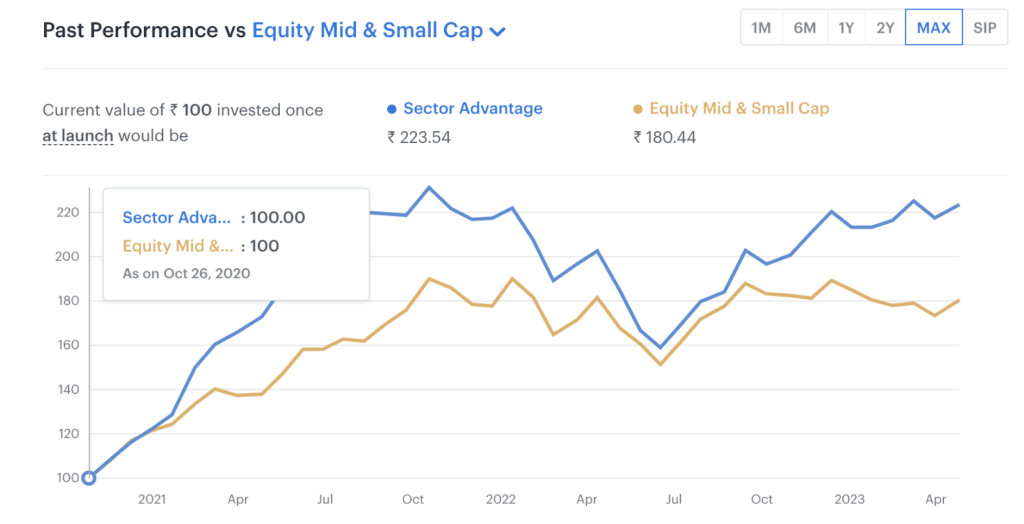Last Updated on May 12, 2023 by Anjali Chourasiya
Market volatility is a common occurrence in the world of investing. When the market experiences significant swings, it can create uncertainty and anxiety for investors. During these times, many investors may turn to tactical investing strategies in an attempt to capitalize on the market’s movements. However, it’s essential to understand the potential risks and benefits of this approach.
Table of Contents
What is tactical investing?
Tactical investing involves actively adjusting a portfolio’s asset allocation in response to changing market conditions. This approach differs from a passive buy-and-hold strategy, where investors maintain a consistent portfolio allocation regardless of market movements. The goal of tactical investing is to outperform the market by capitalizing on short-term trends and opportunities.
Why is tactical investing beneficial for your portfolio?
One potential benefit of tactical investing is the ability to generate higher returns than a passive approach during periods of market volatility. By adjusting portfolio allocations in response to changing market conditions, tactical investors aim to capitalize on short-term market movements. For example, during a market downturn, a tactical investor may shift their portfolio towards defensive investments, such as bonds or defensive sectors like healthcare, to minimize losses. On the other hand, during a bull market, they may allocate more of their portfolio to growth stocks in order to maximize returns.
Is it actually better?
Historically, a diversified portfolio with a mix of stocks and bonds has outperformed portfolios consisting solely of stocks or bonds. According to a study by Vanguard, a balanced portfolio of 60% stocks and 40% bonds has provided an average annual return of 8.8% from 1926-2020, with lower volatility than a portfolio consisting solely of stocks. By implementing a tactical strategy that adjusts the portfolio’s asset allocation in response to market conditions, investors may be able to generate even higher returns.
Key to successful tactical investing
It is to monitor where the liquidity moves and optimal diversification. Historically when there is high liquidity, equity is the ideal asset class to be in. However, when the liquidity starts to dry up, defensive assets (like gold etc.) take the lead. Sector Rotation is a strategy of remaining invested in all equity but in selective sectors where you believe liquidity is headed.
Sector Rotation– Tactical Investing, by smarter
Additionally, sector rotation strategies have historically outperformed the broader market in certain market environments, but there is no guarantee that these trends will continue. Something we believe we are good at. In our “Sector Advantage” strategy, the team uses AI/ ML to build a portfolio of a handful of sectors depending on the market position and macro/micro-economic conditions.
For example, the portfolio was overweight “Metals & Mining” from August 2022 to December 2022 from when the team was overweight “Consumer Durables” to April 2023. This strategy has managed to clock over 38.6% CAGR since its inception in October 2020.
The advantage of this strategy is optimal diversification and equity exposure.

Timing the market usually does not work
Furthermore, attempts to time the market can often result in underperformance. According to a study by Morningstar, investors who attempt to time the market have historically underperformed those who maintain a consistent investment strategy. From 1995-2014, the average annual return for market timers was 1.9%, compared to 8.2% for buy-and-hold investors. This suggests that trying to time the market can be a risky and challenging strategy to execute.
Finally, it’s important to consider the role of skill and experience in tactical investing. Active portfolio management is difficult and requires skill and expertise to outperform the market consistently. According to a study by S&P Dow Jones Indices, 88% of large-cap funds underperformed the S&P 500 index over a 10-year period ending in 2020. This suggests that simply adopting a tactical approach is not enough to outperform the market – it requires skilful execution.
This article was written by Mayank Mehraa from Craving Alpha. Craving Alpha’s Core Value Investing smallcase puts the above research principles to practise in their portfolio selection.
- Decoding Credit Ratings and Their Ripple Effects - Nov 6, 2023
- The Impact of Market Volatility on Tactical Investing - May 12, 2023
- Can Fixed Income Help a Portfolio During Volatile Times? - Feb 20, 2023







